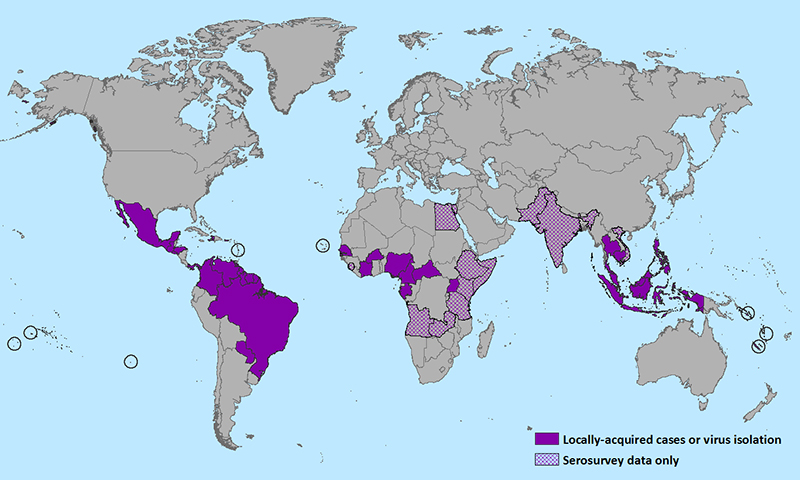Zika virus can be spread from a pregnant woman to her unborn baby. There have been reports of a serious birth defect of the brain called microcephaly and other poor pregnancy outcomes in babies of mothers who were infected with Zika virus while pregnant. Knowledge of the link between Zika and these outcomes is evolving, but until more is known, CDC recommends special precautions for the following groups
What is the current situation?
In November 2015, the first local transmission of Zika virus infection (Zika) was reported in Central America. Local transmission means that mosquitoes in the area have been infected with Zika virus, spreading it to people. Since then, the following Central American countries have reported ongoing transmission of Zika:
Geographic Distribution
Where has Zika virus been found?
Prior to 2015, Zika virus outbreaks had been identified in countries in Africa, Southeast Asia, and the Pacific Islands.
In May 2015, the Pan American Health Organization (PAHO) issued an alert regarding the first confirmed Zika virus infections in Brazil. Currently, outbreaks are occurring in many countries in the Americas. In December 2015, Puerto Rico reported its first confirmed Zika virus case.
Locally-transmitted Zika virus has not been reported elsewhere in the United States, but cases of Zika have been reported in returning travelers. With the recent outbreaks in the Pacific Islands and South America, the number of Zika cases among travelers visiting or returning to the United States will likely increase. These imported cases may result in local spread of the virus in some areas of the United States.







 then what kind of sistituations current socialty are facing with? just pay more a little patience to do more slitly analysing you dudes will finding more fact both truth........
then what kind of sistituations current socialty are facing with? just pay more a little patience to do more slitly analysing you dudes will finding more fact both truth........





